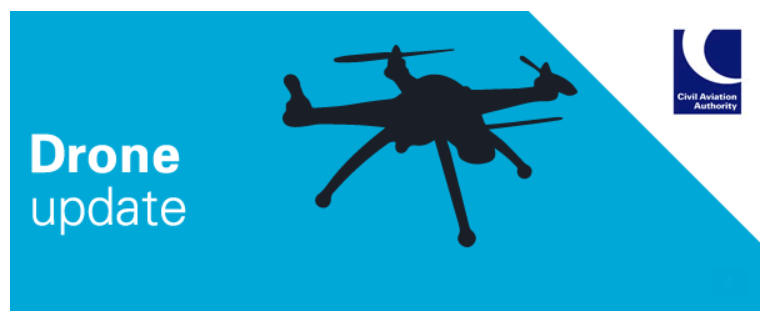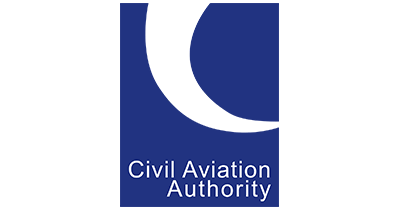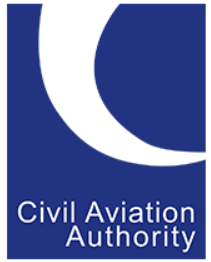
Flylogix have been selected to join the CAA’s Innovation Sandbox. They will be working alongside Total, NATS and the Oil & Gas Technology Centre.
They aim to drive forward the safe operation involving BVLOS within the Offshore Oil and Gas Sector.
It will allow them to mobilise their UAVs at short notice to launch from their UK operating hubs to reach any UK offshore asset within hours, providing a range of services to the offshore energy sector including environmental monitoring, surveillance and delivery. Their track record and recent experience place them in an ideal position to do so.
Last autumn they took part in BVLOS operations in the North Sea involving finding and tracking a vessel, potentially very useful in Search and Rescue Scenarios, as well as a record breaking 185km methane detecting flight.
185km UAV Flight
The drone circled the Clair platform at a radius of 550 metres for 90 minutes, travelling for a total of more than 185 km, significantly beating the previous record of 100 km. The pre-programmed drone, once airborne, managed itself autonomously. Throughout the flight, the RPAS live-streamed valuable data collected by the methane sensor.
Ariel Flores, North Sea regional president, said: “Improving our knowledge, understanding and performance by testing new technologies and working closely with suppliers is central to the North Sea’s carbon reduction plan, which aims to limit greenhouse emissions in our North Sea business.
This pilot project represents a significant step forward in our ability to do that.”
Following the successful results, the specialist drone will be deployed to all of BP’s North Sea assets in 2020, including ETAP and Glen Lyon.
Cross Channel BVLOS
British technology and aviation business, Flylogix, completed a series of UAV operations in the Solent and Channel to provide live video of National Grid’s Interconnexion France-Angleterre 2 (IFA2) cable installation to help coordinate maritime response to threats to the cable. Flylogix safely conducted the beyond line of sight operations in a broad range of weather conditions in one of the most congested marine and aviation areas in the UK.
On the CAA’s Innovation Sandbox
Charles Tavner, executive chairman at Flylogix, said: “We are delighted to be working with the CAA to reduce the cost, risk and environmental impact of providing unmanned aviation services to the offshore energy sector. We are determined to use our hard-fought operational experience to trailblaze growth in this new category of full-service over horizon aviation services.”
While Frédéric Laugère, Innovation Services Lead at the Civil Aviation Authority, said: “Using unmanned aircraft to assist the offshore energy industry is a perfect use for the technology and one that we are keen to see develop. We are delighted to welcome Flylogix to our innovation sandbox to enable us to work together on this area which has the potential to deliver key benefits to a vital part of the UK’s energy infrastructure.”
11th May 2020

The latest insight from the Civil Aviation Authority‘s Innovation Hub has just been published. This time they’re focused on some of the lesson’s learned after a year of working with consortia of innovators.
CAP 1900: Social Licence to Operate: Concept Guide for New Technologies
Public engagement has long been recognised as an important part of commercial strategy and ensuring success. When it comes to introducing highly innovative ideas to market this need to actively and effectively engage becomes even more critical. This publication (CAP 1900) provides guidance on how innovators can build in social engagement as a key part of their development strategy.
CAP 1905 Guidance for Consortia_Apr 2020
Good practice guidance to support better working, efficiency, and success based on our experience working closely with consortia in our Regulatory Sandbox.
31st March 2020

An update to our UAS operator community on COVID-19
Following the recent and unprecedented COVID-19 developments, we thought it would be useful to provide an update to you all in respect of how we in the UAS Unit and the CAA more generally are working under these unprecedented circumstances. Given the measures recently announced by the Government, everyone in the UAS Unit is now working remotely until further notice. During this period, we will working in the following way:
In this issue:
We hope this communication provides some clarity on our mode of working throughout this period.
We understand the impact this is having on all of you and your ability to work. We are working closely with our colleagues in government on this and reviewing any requests we get from you on a case by case basis as to how we might take measures to make this period easier.
We are looking at this across the industry and as part of this the CAA has decided to delay the implementation of its overall proposed charge increases for three months to assist the UK aviation industry in these difficult times and will then keep this under review. You can see more information at Schemes of Charges
Thank for your ongoing understanding and we wish you all well during this uncertain time.
Regards
The Unmanned Aircraft Systems Department

Jamming trial to effect electronic situational awareness devices and UAS system 40,000 FT AMSL
Jamming activity will take place 10 – 21 February 2020, 0800 and 1800 GMT, near RAF Spadeadam and surrounding areas.
This may affect cockpit devices and UAS systems operating on 433MHz, 868MHz (FLARM/PilotAware), and 2.4GHz, 5.8GHz (WiFi) within 30 NM of 550306N 0023318W (spadeadam) up to 40,000 FT AMSL.
During the trials GPS moving maps and WiFi devices (including UAS systems) may suffer intermittent or total failure. GNSS jamming will also take place as part of this activity.
For further information contact: [email protected]
In an Emergency or to cease jamming contact: 01697 747321 extensions 6386, 6375 or 6388.

The Drone Industry Action Group met on the following dates and the minutes and presentations are available. If you have any questions, please get in touch via [email protected]
15 March 2018
12 June 2018
12 September 2018
12 December 2018
20 March 2019
5 June 2019
12 September 2019

Regularly operating unmanned vehicles beyond the visual line of sight (BVLOS) of their operator is a key requirement to maximise the benefits that this technology can deliver.
This new Innovation Hub guide introduces the fundamental principles of operating safely beyond visual line of sight, and describes the challenges that must be tackled in order to unlock the full potential for everyday flying such as inspection of infrastructure and deliveries.
191126_CAP 1861 – BVLOS Fundamentals – UAS Innovation
The UK Civil Aviation Authority has published its first guide aimed at supporting the industry to make unmanned aircraft (drone) flights beyond the visual line of sight of the operator (BVLOS) an everyday occurrence. This would significantly change how unmanned aircraft are used in the UK.
Currently, BVLOS flights require permission from the Civil Aviation Authority and can only occur in specific, restricted cases. Normalizing BVLOS will continue to push the UK forward as a world-leader in aviation innovation and technology.
The guide details how future BVLOS operations can be achieved through testing and technology development. They set out the need for the regulator and innovators to build, test, learn and repeat in partnership in small steps to work toward the vision of safe BVLOS operations becoming business as usual in the UK.
David Tait, Acting Head of the UK Civil Aviation Authority’s Innovation Team, said:
“Enabling everyday drone flying beyond visual line of sight is a game changer, providing the opportunity for unmanned vehicles to monitor critical infrastructure, make deliveries and support our daily lives in an efficient and environmentally friendly way.”
“We are now working closely with some of the world’s leading innovators to make these amazing possibilities a reality.”
One company involved in the Civil Aviation Authority’s innovation work is sees.ai, a Techstars-backed startup led by four seasoned founders, formerly with Arup, Apple, CERN, McLaren and hedge funds.
sees.ai is developing technology that will enable drone service operators to fly drone missions BVLOS, from a central control room, at scale. Initial focus is on closed industrial sites, e.g. construction, infrastructure, and oil & gas. Tests are planned with companies such as Skanska, Atkins and the fire service, supported by NATS and Vodafone.
John McKenna, CEO of sees.ai, said: “Under conventional visual line of sight rules, operations have virtually zero economies of scale. In contrast, a centralised BVLOS approach improves on almost every measure with scale – including quality, safety, responsiveness and cost. For end clients, our technology will unlock a service that is better, quicker and cheaper. For operators, our technology will give them a competitive advantage that increases with scale. It’s a very exciting time and we are delighted that the CAA have invited us to explore the future with them.”
This roadmap has been produced by the Civil Aviation Authority’s Innovation Team, initially funded by a Department for Business, Energy and Industrial Strategy (BEIS) grant.
25/11/2019